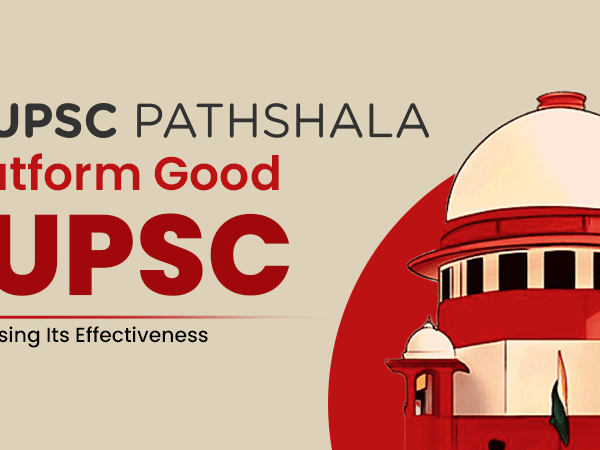UPSC CAPF paper was conducted on 20 December 2020 for the post of Assistant Commandant. Graduates from all fields can give this exam. Candidates willing to give this exam need more than a basic UPSC preparation, as the exam is for defence forces. The minimum age for UPSC CAPF paper is 20 years. It goes up to 25 years for general and up to 30 years for other category candidates. Many youngsters want to give this examination, but are often confused about how is the cutoff for the UPSC CAPF AC calculated?
The UPSC exam for CAPF AC is different from other exams, as there are no Mains or Prelims exams.
In this article, we will help you in understanding how the cutoff for the UPSC CAPF AC is calculated.
UPSC CAPF Paper Content
The UPSC exam for CAPF has two papers that are marked differently. The details of the two UPSC CAPF paper are as follows:
UPSC CAPF Paper 1: General Ability and Intelligence Details
Here are the details of the CAPF question paper for Paper 1:
- Question Type: Multiple-choice questions.
- UPSC CAPF Paper 1 Syllabus: General mental ability, general science, current events of national and international importance, Indian polity and economy, history of India, Indian and world geography.
- Total Marks: 250 Marks.
UPSC CAPF Paper 2: General Studies, Essay and Comprehension Details
Here are the details of the CAPF question paper for Paper 2:
- Question Type: Written.
Part A: Essay Questions.
Part B: Comprehension.
- UPSC CAPF Paper 2 Syllabus: Part A: Modern Indian history especially of the freedom struggle, geography, polity and economy, knowledge of security and human rights issues, and analytical ability; Part B: Comprehension passages, precise writing, developing counter arguments, simple grammar and other aspects of language testing.
- Total Marks: 200 Marks (Part A: 80 Marks; Part B: 120 Marks).
The marks secured in the above papers decide whether the candidate will advance to the next level or not.
For selection, a candidate should be scoring equal to or more than UPSC CAPF cutoff marks.
How is the UPSC CAPF Cutoff Calculated?
The UPSC CAPF cutoff varies according to the category the student belongs to. There is no specific way of calculating cutoff for this exam. However, suppose we consider the previous year’s cutoff and the corresponding vacancies in that year. In that case, we can conclude that UPSC CAPF Cutoff is inversely proportional to the increase in vacancies. If the vacancy is higher than in previous years, then the chances of cutoff being lower than earlier years are high and vice-versa.
The cutoff for UPSC CAPF Paper 1 is calculated separately from Paper 2. The cutoff for paper 1 is the mark that a student should score in the UPSC exam for clearing the exam. It means that there are no specific qualifying marks that a student should score to qualify for the next round. A student will be eligible for paper 2, only if he scores equal to or more than the set cutoff marks.
In paper 2, the student has to score minimum qualifying marks as set by UPSC. If a student scores more than the required marks in paper 2, the student will qualify only if the aggregate score of paper 1 and paper 2 equals or surpasses the minimum marks.
Example
For instance, suppose a student scores 30 marks where cutoff was 26 and scores 49 in paper 2, where qualifying marks were 50. The overall qualifying marks with aggregate scores of paper 1 and paper 2 is 76. Here, the student has scored 79 marks overall. However, the student did not score qualifying marks in paper 2. Hence, she/he will not qualify for the next round.
What Next After Qualifying the UPSC CAPF Paper?
After you have qualified the UPSC CAPF paper, you will have to give Physical Standards/Physical Efficiency Tests and Medical Standards Tests. The tests will be conducted after the candidate meets the required physical standards.
The tests will have the following criteria, to be fulfilled by the candidates:
| Tests Required | Male | Female |
| 100 Meters race | To be covered in 16 seconds. | To be covered in 18 seconds. |
| 800 Meters race | To be covered in 3 minutes 45 seconds. | To be covered in 4 minutes 45 seconds. |
| Long Jump | 3.5 metres (In 3 chances). | 3.5 metres (In 3 chances) . |
| Shot Put (7.26 Kgs.) | 4.5 metres. | — |
The candidates who will pass the Physical Efficiency Test will be qualified for the Interview. Please note that the candidates will not qualify for Interview round if they fail
After passing the physical tests, candidates will be required to give an Interview/Personality Test. This round will carry 150 Marks.
The final selection of candidates will be done after combining the marks scored in the Written Test and Personality Test.
Concluding Words
We hope that there isn’t any more confusion regarding the calculation of UPSC CAPF cutoff. The cutoff calculation has also been explained for each paper for a better understanding while calculating your marks for this UPSC exam.
Keep checking this space for more such useful information related to UPSC exams.







